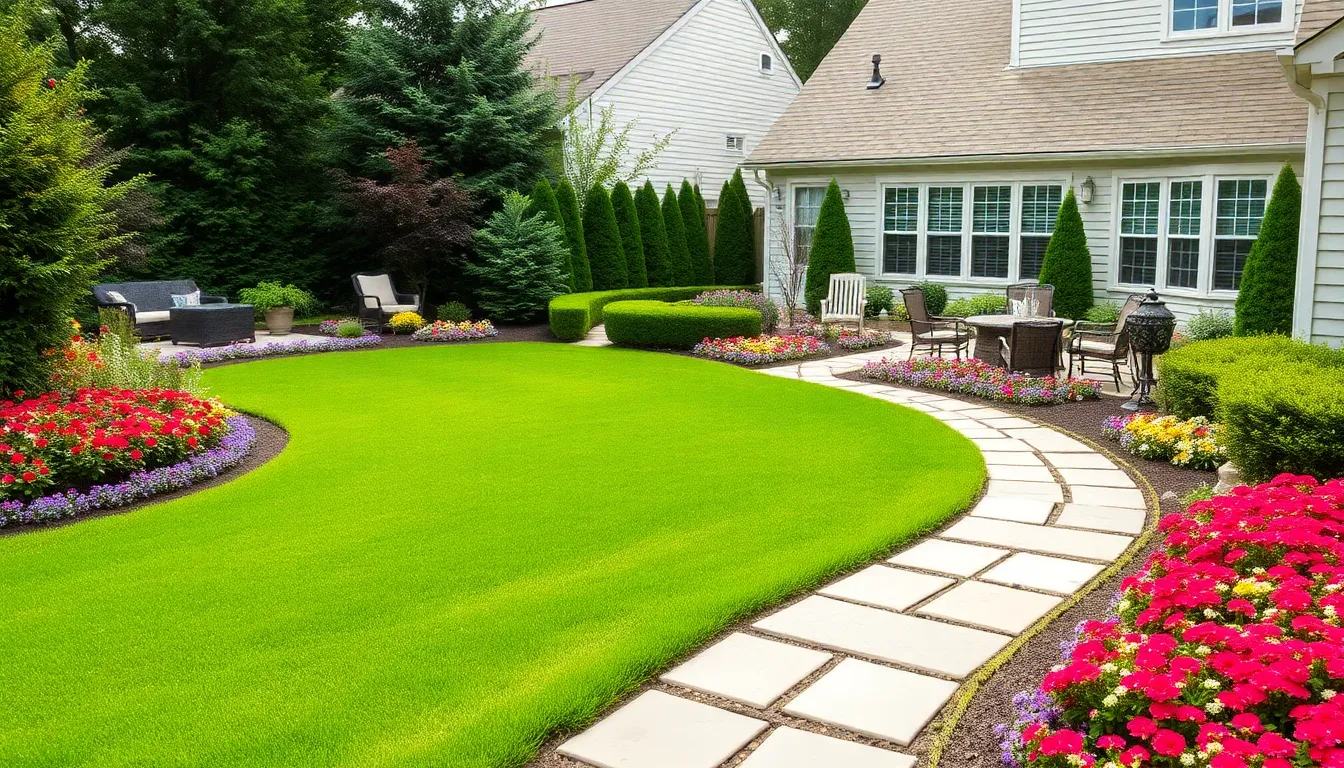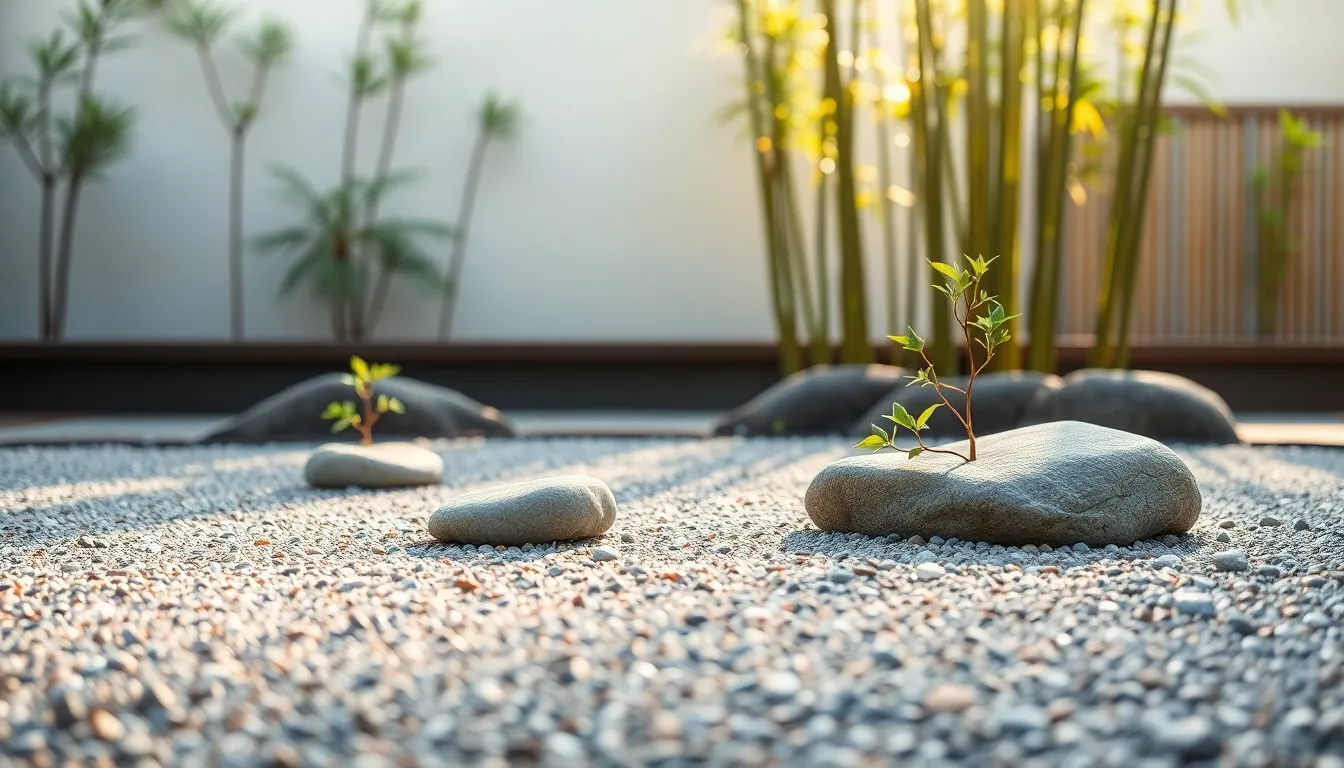Transforming an outdoor space can feel like a daunting task, but it doesn’t have to be! With so many types of landscaping to choose from, there’s a perfect style waiting to turn that patch of grass into a vibrant paradise. Whether you’re dreaming of a serene Zen garden or an eye-catching tropical retreat, the options are as endless as your neighbor’s obsession with lawn gnomes.
types of landscaping
Landscaping encompasses various styles, each catering to specific preferences and environments. Traditional landscaping features well-defined plant beds, manicured lawns, and symmetrical designs, appealing to those who appreciate order. Contemporary landscaping often embraces minimalism, utilizing clean lines and native plants that require less maintenance.
Tropical landscaping brings vibrant colors and lush foliage to outdoor spaces, creating a relaxing paradise through palm trees and exotic flowers. Xeriscaping prioritizes water conservation, employing drought-resistant plants suitable for arid climates while maintaining aesthetic appeal.
Rock gardens incorporate stones, gravel, and hardy plants, offering a low-maintenance option that complements natural terrain. Formal landscaping focuses on elegance, often including structured hedges, topiaries, and carefully planned pathways.
Eclectic landscapes blend various styles, allowing homeowners to create unique and personalized spaces that reflect individual tastes. Zen gardens emphasize tranquility with gravel, sand, and strategically placed stones, making them perfect for meditation.
All of these landscaping types provide opportunities to enhance outdoor aesthetics and functionality. Understanding each style allows for informed decisions that cater to personal preferences and environmental constraints. Exploring these categories reveals the vast possibilities available to transform any outdoor area into a beautiful, functional space.
Residential Landscaping

Residential landscaping plays a significant role in enhancing home aesthetics and functionality. It encompasses various styles that cater to individual preferences and needs.
Traditional Landscaping
Traditional landscaping emphasizes a classic look with well-defined edges and structured layouts. Common features include manicured lawns, plant beds with seasonal flowers, and neatly trimmed hedges. Homeowners often choose a balanced mix of perennials and annuals to create vibrant displays throughout the year. Pathways made from stone or brick improve accessibility while adding charm. This style typically appeals to those desiring a timeless and polished outdoor space.
Modern Landscaping
Modern landscaping focuses on minimalism and simplicity, showcasing clean lines and open spaces. Homeowners often prefer a smaller plant selection that highlights native species, which require less maintenance. The use of hardscaping materials such as concrete, metal, and wood helps create visually striking contrasts. Integrating outdoor furniture enhances the usability of these spaces, transforming them into functional areas for relaxation or entertainment. This trend attracts individuals who appreciate contemporary aesthetics and sustainable practices.
Commercial Landscaping
Commercial landscaping enhances business premises, promoting a professional image. This type of landscaping involves meticulous design and ongoing maintenance.
Xeriscaping
Xeriscaping minimizes water use while maintaining aesthetic appeal. It incorporates drought-resistant plants that thrive in specific climates. Landscapers select native flora, which requires less irrigation and promotes local wildlife. Mulching plays a vital role in moisture retention, reducing the need for constant watering. Effective design often combines hardscaping elements, providing visual interest without heavy water demands. Businesses benefit from lower maintenance costs, resulting in an efficient and environmentally friendly outdoor space.
Sustainable Landscaping
Sustainable landscaping prioritizes ecological health and resource conservation. This approach utilizes organic fertilizers and pest management techniques to protect local ecosystems. Landscapers focus on maintaining biodiversity by incorporating various plant species that support local wildlife. Rain gardens enhance stormwater management, promoting natural filtration and reducing runoff. Implementing native plants helps create resilient landscapes that adapt to local conditions. Commercial properties that invest in sustainable landscaping demonstrate a commitment to environmental responsibility and attract eco-conscious clients.
Specialty Landscaping
Specialty landscaping offers unique designs tailored to specific themes and purposes, enhancing the visual appeal and functionality of outdoor spaces.
Tropical Landscaping
Tropical landscaping showcases lush foliage and vibrant flowers, creating an inviting oasis in any environment. Plants like hibiscus, bird of paradise, and palms form the backbone of these landscapes. It’s possible to incorporate vibrant colors through carefully selected blooms that thrive in warm climates. Water features, like ponds or fountains, often enhance the tropical atmosphere. Furniture made from natural materials provides a comfortable spot to enjoy the serene surroundings. Engaging pathways lined with colorful plants lead guests through this lively outdoor paradise.
Japanese Zen Gardens
Japanese Zen gardens emphasize simplicity and tranquility, designed for contemplation and meditation. Raked gravel and strategically placed stones create patterns that reflect nature’s beauty. The use of moss and sparse plant life achieves a serene, minimalist aesthetic. Water features might include koi ponds or bamboo fountains, offering soothing sounds that foster peace. Pathways made from stepping stones guide visitors through these tranquil settings. Garden structures, such as bonsai trees or lanterns, add subtle details that enhance the overall ambiance.
Conclusion
Landscaping offers a wealth of options to transform any outdoor space into a personal oasis. By understanding the different styles available individuals can choose the one that best suits their preferences and lifestyle. Whether one opts for the elegance of traditional landscaping or the vibrancy of tropical designs the right choice can enhance both beauty and functionality.
Incorporating sustainable practices further elevates the appeal of landscaping while contributing positively to the environment. With the right approach anyone can create a stunning outdoor area that reflects their unique taste and serves as a welcoming retreat.

